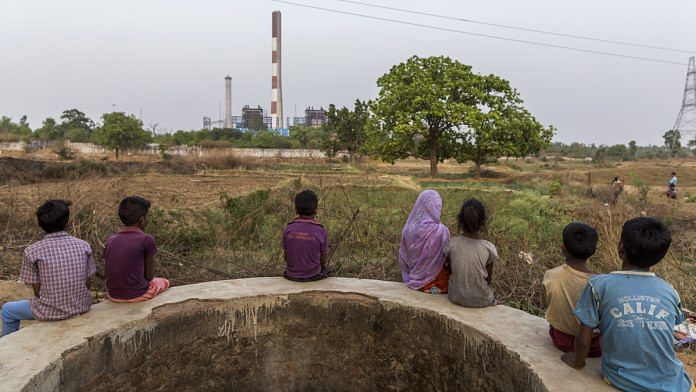School closure has affected all students and families with reports on online classes causing both mental and physical problems in children. But those hit hardest are the economically and socially vulnerable students.
Online classes are the new norm but the vast majority of the poor in both rural and urban India are ill-equipped to benefit from them. In February this year, Sanjay Dhotre, the minister of state for communication, human resource development and electronics and IT, had said in the Lok Sabha that 27,721 villages in India do not have a mobile connection.
As per a UDISE (Unified District Information System for Education) report, in 2017-18, only 28.7 per cent of schools in rural India and 41.9 per cent in Urban India had functional computer facilities. Moreover, as per the report of the Telecom Regulatory Authority of India (TRAI), only 27.57 per cent of rural India had internet as of September 2019. The numbers are even more dismal as per the 75th round survey on education by the National Statistical Organisation (NSO), which puts the percentage of households having internet in rural India at only 14.9 per cent and those having computers at 4.4 per cent (excluding smartphones).
Online education will most likely continue until the coronavirus pandemic has eased. Even after the pandemic, the provision of infrastructure to pass on the benefits of educational videos, podcasts and better interactions with competent teachers without absenteeism to the rural poor via the internet is an investment worth making to increase the employability of the poor.
Investment has to be made for ‘end user devices’ at both ends — that is, for the teachers as well as the students — and for the provision of internet connectivity linking the two.
Also read: Huge rural-urban gap in education expenditure & internet access, reveals NSO survey
Connecting more people
Back in 2012, the UPA government was toying with a scheme named ‘Har Haath Mein Phone’, which would receive its funding from the telecom department’s ‘universal service obligation (USO) funds’ whose one obligation is to make phone services available to all at affordable rates. Something similar can be examined today for all households identified by the ministry of rural development under its Socio-Economic Caste Census (SECC). Data deduplication of the SECC list with the help of telecom companies and Aadhaar could be an effective way to identify families that do not have smartphones. Telecom companies maintain IMEI numbers and the model of the phone used for each SIM activation. Simultaneously, computers/tablets and customer premise equipment (CPEs like fibres/boosters, routers, etc.) could be provided to schools without computers, to access the internet.
Devices can be centrally procured for distribution based on numbers identified from the deduplication exercise. Through a concerted drive, the central and state government could call for donating discarded equipment through collection centres in urban areas, set up testing and repair centres to restore the donated equipment to a workable condition, and then distribute them to eligible teachers and students. This would considerably reduce the financial burden on the government besides reducing e-waste.
With regards to the provision of broadband, India currently ranks 134 in the fixed-line broadband reach. Unlike mobile towers, fibre needs to physically reach each premise. Therefore, in the current Covid pandemic, we have to look to mobile towers for last-mile connectivity in every rural home. Telecom service providers should be incentivised to erect more base towers to connect villages having no or poor mobile connectivity while repeaters should be installed to extend transmission. The RailTel Corporation’s National Optical Fibre Network extending across India should also be tapped into to see where the last mile fibre connectivity can be provided in the shortest period of time.
Also read: Why 5G is unlikely to solve India’s digital connectivity problems
Tapping into available resources
Once internet connectivity in the form of mobile tower/fibre reaches a village, classes can also be held in a staggered manner in schools, panchayat bhawans, community halls for students while following all Covid safety norms. Teachers can hold their interactive online classes from these premises and also prepare videos and podcasts for students.
Software applications used for conducting online classes also need to be centralised to hold meetings without restrictions in terms of the duration of call and number of participants. More than 70 per cent of students from upper-primary to senior secondary level attend government or government-aided private schools in rural India. At these schools, video conferencing packs can be purchased centrally at district levels.
The attendance ratio of rural India lags behind urban India at all levels but becomes more prominent after secondary school level with only 39.8 per cent of students attending classes as against 52.8 per cent in urban India at higher secondary level. Getting these students to attend online classes without any monitoring would require incentives in the form of access to free online games/libraries/movies on completion of a given number of hours, which can be provided by EdTech companies that have had a surge in registration and revenues post lockdown.
Even when regular classes begin, the internet infrastructure, if put in place, would continue to provide the best in education experience to the hinterlands. Education is an investment in India’s future, which requires concerted efforts by all stakeholders. Internet infrastructure would provide a level-playing field, compliment the spirit of Right to Education, and supplement our commitment to the fulfilment of one of our sustainable development goals, SDG 4 — ‘to ensure inclusive and equitable quality education and promote lifelong learning opportunities for all.’
Dr Arvind Mayaram is former Union finance secretary and chairman, CUTS Institute for Regulation & Competition.
Sheetal Choudhary is deputy general manager, Indian Oil Corporation. Views are personal.



